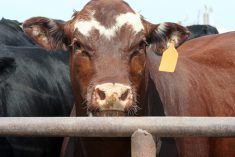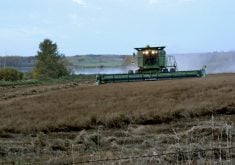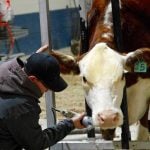Western Canadian feeder cattle prices were down $4-$5 on average on very light volume sales. Pasture conditions are very good across the Prairies, limiting the number of replacement cattle coming on the market. Most auction markets are also in summer holiday mode and many buyers are on holidays.
Cash barley prices in southern Alberta jumped $10 per tonne last week, reaching record highs of $270 per tonne delivered. Canadian feeder prices were led lower by the U.S. market, where calves under 650 pounds were $10-$15 per hundredweight lower in comparison to last week.
Read Also

Canadian trade data delayed by U.S. government shutdown
Canadian international trade data for September will be delayed indefinitely due to the ongoing partial shutdown of the United States government, Statistics Canada said Friday, Oct. 24.
Alberta packers bought fed cattle in the range of $108-$110 last week. In southern Alberta, 600- to 700-lb. steers sold in the range of $160-$170/cwt while 700- to 800-lb. steers sold from $143 to $155/cwt. Heifers were selling at a $10-$12/cwt discount to steers. The market was not well defined due to the limited supply situation.
The U.S. feeder market has become the focus of attention due to the drought conditions in across the Corn Belt. Cow-calf producers are liquidating top-quality cows and heifers as pasture conditions dry up and feedgrain prices rally.
Feedlot placements in July will be much higher than earlier expectations, resulting in larger beef production in the fourth quarter. The U.S. is experiencing a significant drought, probably the worst since 1988, and it appears that the cattle herd is now contracting. The feeder market has been encouraging expansion but the drought has caused a counter-cyclical environment.
Export barley prices for September and October are higher than the domestic market. This will cause barley supplies to move offshore rather than to domestic feedlots. Longer-term, the barley market needs to ration demand, so domestic values in southern Alberta should trade at a sharp premium to world values.
Next spring, barley in central Saskatchewan needs to flow to southern Alberta instead of to Prince Rupert or Vancouver. The non-monopoly export environment will significantly change the barley fundamental structure in the 2012-13 crop year. Barley prices will define the feeder market next fall and winter.
















